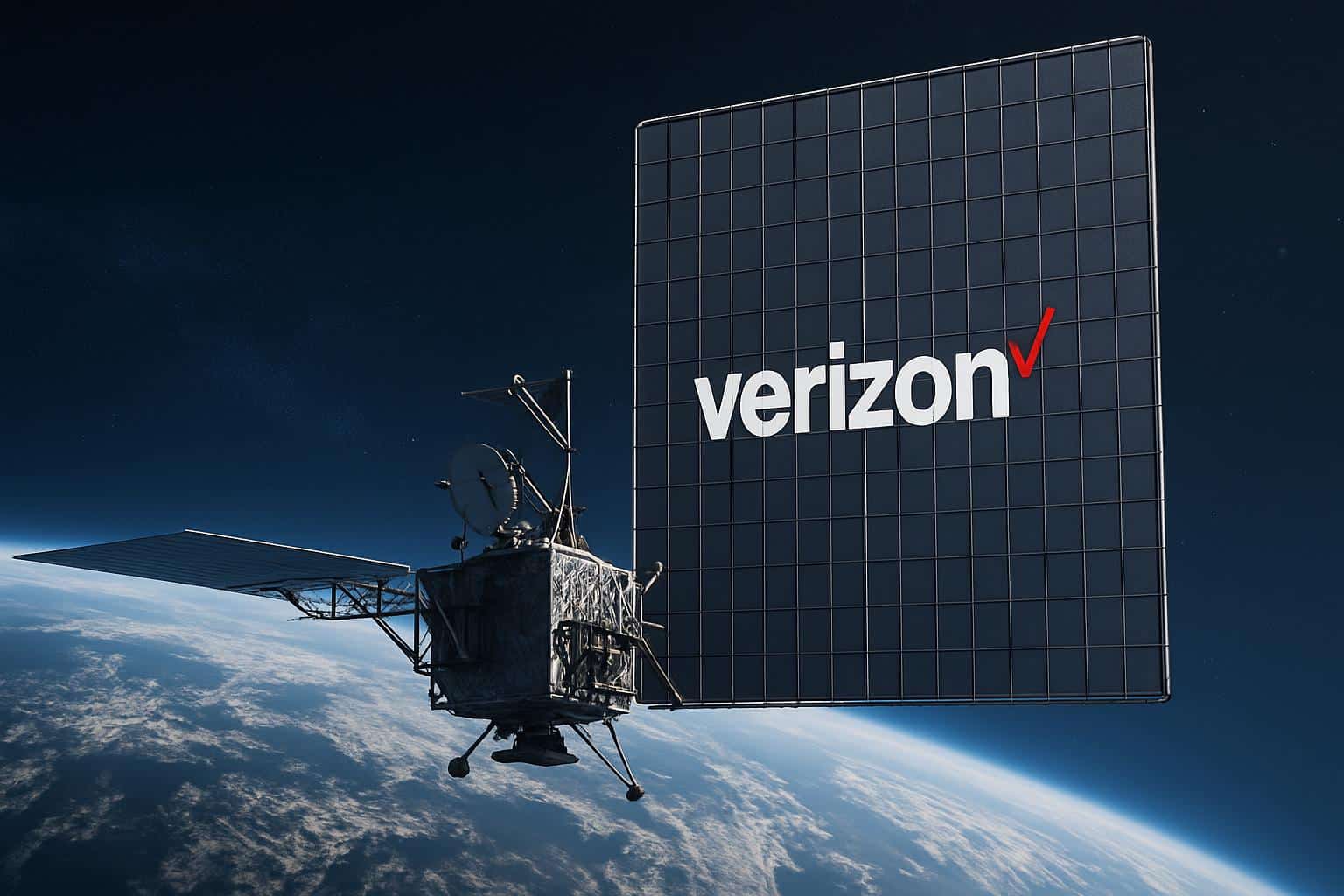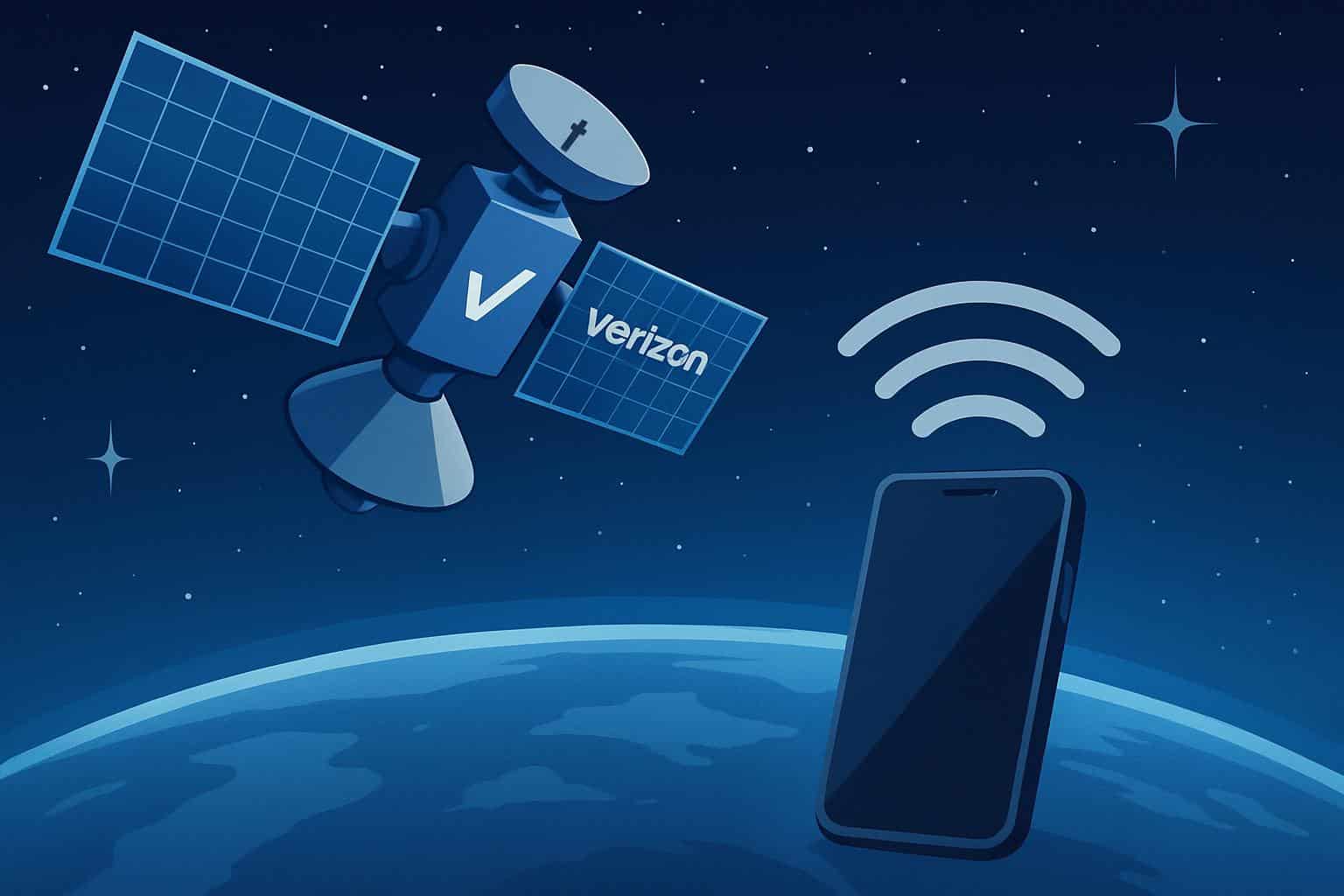Verizon has gone from dipping its toe in the waters to diving in headfirst by signing a commercial agreement with AST SpaceMobile, which aims to bring satellite-to-phone connectivity to Verizon customers. The transaction turns a strategic partnership announced last year into a provision of service, including coverage solutions to fill in the gaps with space-based voice, text and data services via standard cellular smartphones.
The carrier already provides limited satellite messaging via Skylo, on a few devices. AST takes its system further, by aiming for direct 4G and 5G connections that act like roaming cell towers in the sky, no special hardware or bulky satellite phones needed.
- Why Verizon Went With AST Instead of Starlink
- Here’s What AST Promises For Your Everyday Phone
- The race in numbers: satellite counts and launch plans
- Terms, timing and the capacity question for satellite service
- Spectrum And Standards Drive The Rollout
- Competitive dynamics beyond marketing in satellite-to-phone
- What to watch next as AST and Verizon ramp service

Why Verizon Went With AST Instead of Starlink
SpaceX has sprinted out of the gate on its cellular Starlink service with T-Mobile, including a blanket beta invite and an official consumer launch. Instead of hitching its wagon to the Starlink train, Verizon is all in on an outfit called AST SpaceMobile, a Texas company it wants to use to beam service directly to unmodified handsets.
AST’s strategy relies on massive phased-array satellites that can speak the same standard cellular languages over licensed spectrum. It’s a big deal for Verizon: the company has committed both funding and access to a chunk of its airwaves, which should enable tighter integration with Verizon’s land-based network and greater control over quality-of-service and roaming terms.
Here’s What AST Promises For Your Everyday Phone
AST SpaceMobile says its satellites have placed direct voice and video calls, and two-way RCS messages using off-the-shelf smartphones. The company also touted a Voice over LTE call from one Verizon device in Texas to another Verizon device in New Jersey, with the destination going through an AST spacecraft—a sign that common protocols can travel across the space link.
If Verizon delivers this as planned, it means subscribers will start seeing real coverage in places where they currently experience dead zones — canyons deep in national parks, the potholed interstates of rural America or party barges miles off the coast. That early service would prioritize critical communications; wider data throughput could scale as more satellites joined the constellation.
The race in numbers: satellite counts and launch plans
AST SpaceMobile currently has a few “BlueBird” satellites in the sky and claims it needs about 45 to 60 to provide continuous coverage over the contiguous United States. The company has relationships with several launch providers, such as the space agency in India, SpaceX and Blue Origin to speed deployment.
SpaceX, in contrast, has already sent hundreds of Starlink satellites that are compatible with direct-to-device services and started offering service to T-Mobile customers gradually. That head start is legitimate; however, Verizon’s wager is that AST’s larger satellite apertures and tight coupling with licensed spectrum can provide carrier-grade voice reliability as well as usable data rates the minute a constellation hits scale.
Terms, timing and the capacity question for satellite service
Financial terms of the arrangement were not disclosed, though past filings and announcements include references to a $100 million Verizon commitment as part of the partnership framework. It will be available commercially starting next year, subject to the success of launches and integration with the ground network.

The hard part is capacity. A satellite can bathe vast regions in light, but chopping up that footprint into small enough “cells” to accommodate simultaneous users is a devilishly difficult radio engineering problem. Anticipate an early use case focus on emergency-grade reliability and messaging, with voice and data throughput managed on a per-session basis as the deployment scales.
Spectrum And Standards Drive The Rollout
Regulatory momentum is working in Verizon’s favor. Supplemental Coverage from Space: the Federal Communications Commission has established a framework that permits mobile providers to go beyond their licensed footprint using satellites with space companies. Technically, 3GPP Release 17 is finalizing non-terrestrial network support, so that phones and networks can more smoothly recognize and authenticate space cells.
By using Verizon’s own frequencies, AST can interoperate with a carrier core network to perform authentication, billing and handoffs — in effect acting more like a macro cell than an independent satellite service. That’s a key difference from legacy satellite offerings that rely on special devices or alternative plans.
Competitive dynamics beyond marketing in satellite-to-phone
AT&T has also entered a long-term commercial agreement with AST SpaceMobile, indicating that at least two nationwide carriers see a road to scaling direct-to-device service on the same constellation.
The relationship between SpaceX and T-Mobile, meanwhile, grows deeper and EchoStar’s spectrum portfolio has been involved in mega-deals aimed at boosting space-to-cell capacity.
Consumers already have a taste of satellite safety services with smartphone SOS service offerings enabled by partners like Globalstar. Verizon and AST are after something else: a cellular radio-on-speed-dial that offers the same capabilities as a regular call or data connection, not an emergency-only application, nor even a fallback to narrowband.
What to watch next as AST and Verizon ramp service
Watch for developments in AST’s planned launch cadence and ground network integration. So, shipping second-gen birds and turning on beams over your priority geos will be the proof points that take this from hype to habit.
If AST actually hits its goal of dozens of satellites by the end of the rollout period, I can see Verizon providing an adult safety net in those places where cell towers simply cannot reach. For travelers and first responders, for residents of remote rural communities, that may be the most important network upgrade in more than a decade — but not one that will come from any new phone or app: It is coming instead from space.

